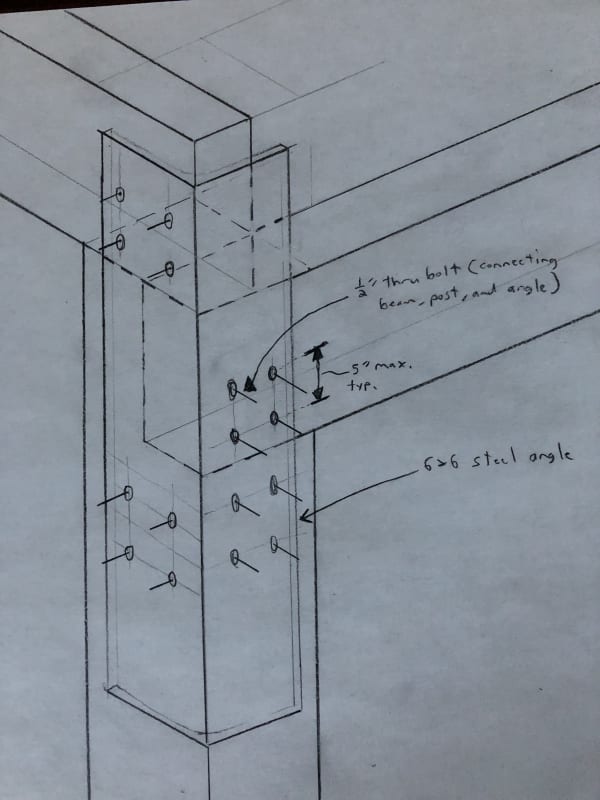TRAK.Structural
Structural
Hi All,
Need help figuring out the best way to connect a wood beam to a wood post. See attached. This is at the corner of a structure where beams spanning opposite directions meet over a column. Currently the beam spanning in and out of the page is shown through bolted to a notched section of the column at the top. The beam spanning left/right on the page is where I am having issues. Both beams are part of knee braced frames so there are some loads to resolve but I don't have any good ideas at the moment of what makes the most sense in terms of general connection scheme here.
Any and all suggestions are appreciated.
Need help figuring out the best way to connect a wood beam to a wood post. See attached. This is at the corner of a structure where beams spanning opposite directions meet over a column. Currently the beam spanning in and out of the page is shown through bolted to a notched section of the column at the top. The beam spanning left/right on the page is where I am having issues. Both beams are part of knee braced frames so there are some loads to resolve but I don't have any good ideas at the moment of what makes the most sense in terms of general connection scheme here.
Any and all suggestions are appreciated.





